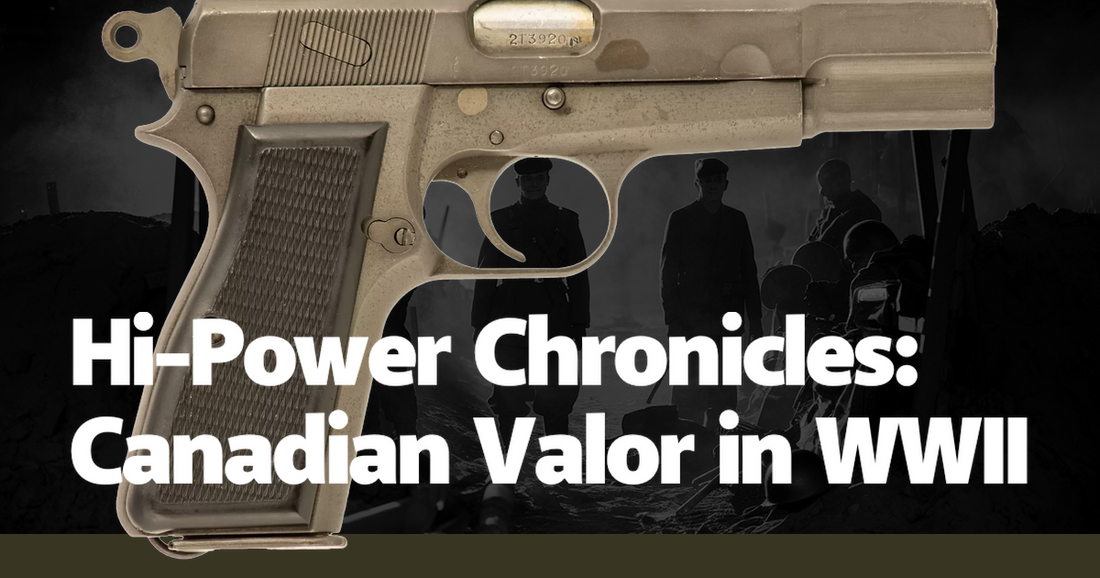Canada's involvement in World War II is often overshadowed by the larger Allied powers, but the valor and contributions of Canadian forces were nothing short of extraordinary. The Hi-Power Chronicles, a term coined to describe the high-caliber efforts and impact of Canadian troops, encapsulates tales of bravery, strategic acumen, and unwavering resolve. From the beaches of Normandy to the liberation of the Netherlands, Canadian soldiers etched their names into the annals of history with blood, sweat, and an indomitable spirit.
One of the most poignant examples of Canadian valor is the D-Day landings on June 6, 1944. Assigned to Juno Beach, the 3rd Canadian Infantry Division faced fierce resistance from entrenched German forces. Despite the formidable defenses, the Canadians displayed remarkable courage. The initial waves faced devastating machine-gun fire and artillery bombardments, yet they pressed on. Anecdotes from veterans recount how soldiers like Sergeant Harold Marshall, despite being wounded, continued to lead his men and secure vital positions. By the end of the day, the Canadians had penetrated further inland than any other Allied force, a testament to their tenacity and tactical prowess.
The Italian Campaign, often referred to as the "soft underbelly" of Europe, was another theater where Canadian forces demonstrated their mettle. The 1st Canadian Division played a crucial role in the Battle of Ortona, a brutal urban conflict in December 1943. Dubbed "Little Stalingrad," the battle saw house-to-house fighting in a medieval town rigged with booby traps and fortified by German paratroopers. Stories of soldiers like Corporal A.J. "Smokey" Smith, who single-handedly took out a German tank and multiple machine-gun nests, highlight the exceptional bravery that characterized Canadian efforts. The eventual capture of Ortona was a significant morale booster and showcased Canadian grit in the face of overwhelming odds.
Canadian contributions were not limited to the European theater. In the Pacific, the Royal Canadian Navy played a vital role in anti-submarine warfare. The corvettes and frigates of the RCN were instrumental in protecting convoys from the ever-present threat of German U-boats. The Battle of the Atlantic, the longest continuous military campaign of WWII, saw Canadian sailors enduring the harsh conditions of the North Atlantic. Tales of ships like HMCS Haida, which became known as the "Fightingest Ship in the Royal Canadian Navy," reflect the relentless spirit of Canadian naval forces. Their efforts ensured the safe passage of vital supplies and troops, underpinning the broader Allied war effort.
The liberation of the Netherlands stands as one of the most celebrated achievements of Canadian forces during WWII. After years of brutal occupation, Dutch citizens were on the brink of starvation. The First Canadian Army, under the command of General Harry Crerar, spearheaded the liberation efforts. The campaign was marked by fierce battles, such as the Battle of the Scheldt, where Canadian forces secured critical supply lines. Personal accounts from Dutch civilians describe the overwhelming gratitude and joy upon seeing Canadian soldiers. The bond forged in those harrowing days endures to this day, with the Netherlands commemorating Canadian sacrifices annually.
Behind the front lines, Canadian contributions to intelligence and codebreaking were equally significant. The establishment of Camp X, a top-secret training facility in Ontario, played a pivotal role in the Allied espionage efforts. Operatives trained at Camp X, including the famous author Ian Fleming, who would later create James Bond, conducted covert operations across Europe. The facility's impact on the war effort is a testament to Canada's strategic foresight and commitment to the Allied cause. These unsung heroes, operating in the shadows, were instrumental in undermining Axis operations and gathering crucial intelligence.
The air war also saw significant Canadian involvement. The Royal Canadian Air Force (RCAF) contributed thousands of pilots and aircrew to the Allied bombing campaigns. The bravery of these airmen, flying perilous missions over enemy territory, cannot be overstated. The story of Pilot Officer Andrew Mynarski, who posthumously received the Victoria Cross for his attempts to save a trapped comrade from a burning Lancaster bomber, epitomizes the selflessness and heroism of Canadian airmen. The RCAF's efforts were crucial in crippling German industrial capacity and hastening the end of the war.
Back home, the war effort galvanized Canadian society. Women stepped into roles traditionally held by men, working in factories, serving in auxiliary military units, and contributing to the war effort in countless ways. The sense of unity and purpose that permeated Canadian society during these years was palpable. Stories of communities rallying to support the troops, organizing war bond drives, and sending care packages to the front lines illustrate the collective spirit that defined Canada during WWII. This home front mobilization was crucial in sustaining the war effort and ensuring that Canadian forces had the resources they needed to succeed.
The legacy of Canadian valor in WWII is a source of immense pride and reflection. The Hi-Power Chronicles serve as a reminder of the extraordinary contributions and sacrifices made by Canadian forces. Their actions not only shaped the outcome of the war but also forged a national identity rooted in resilience, bravery, and a commitment to justice. As we remember these heroes, it is essential to honor their memory by preserving their stories and recognizing the profound impact they had on the world. The lessons of their courage and determination continue to inspire future generations, ensuring that their legacy endures.

